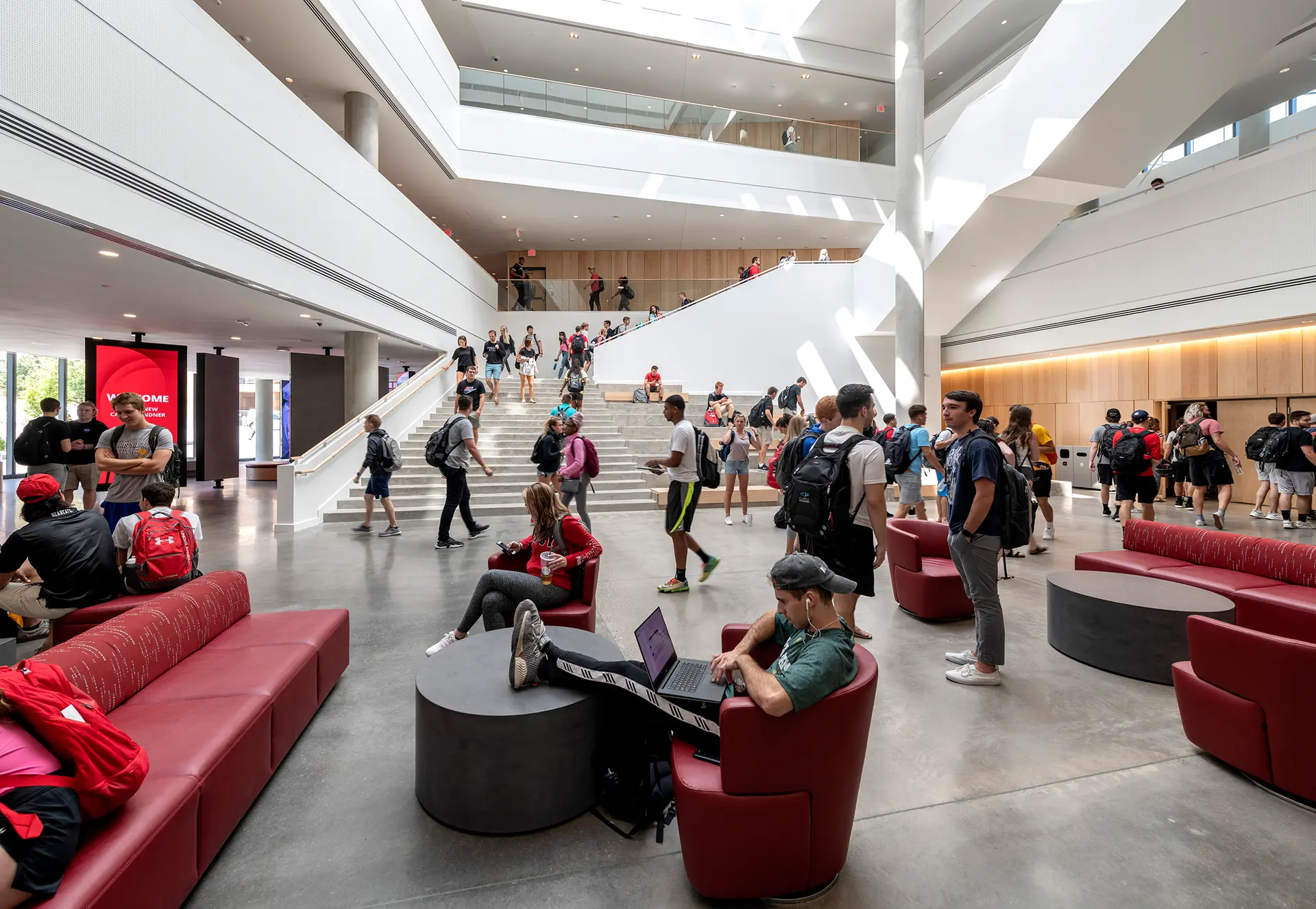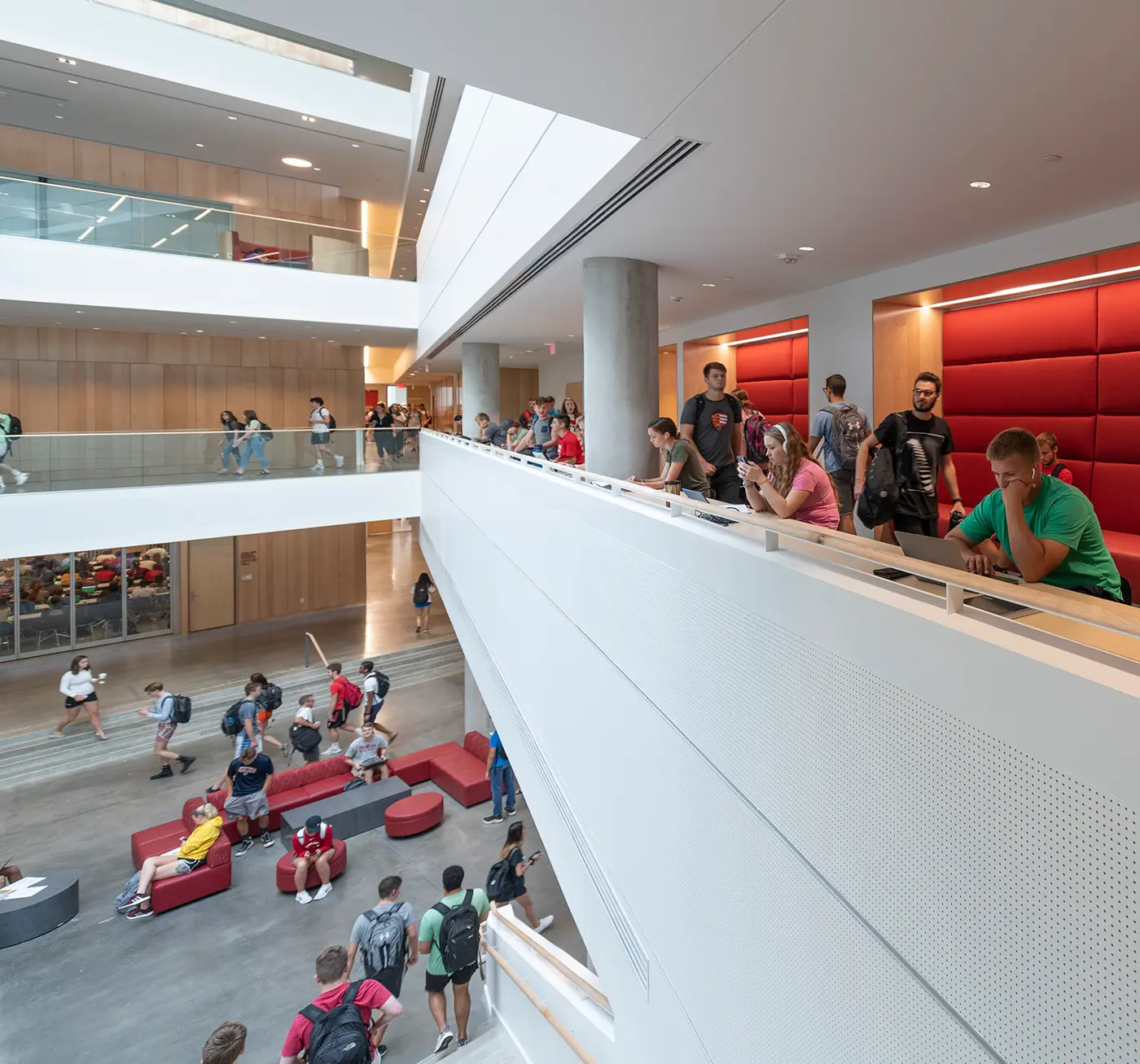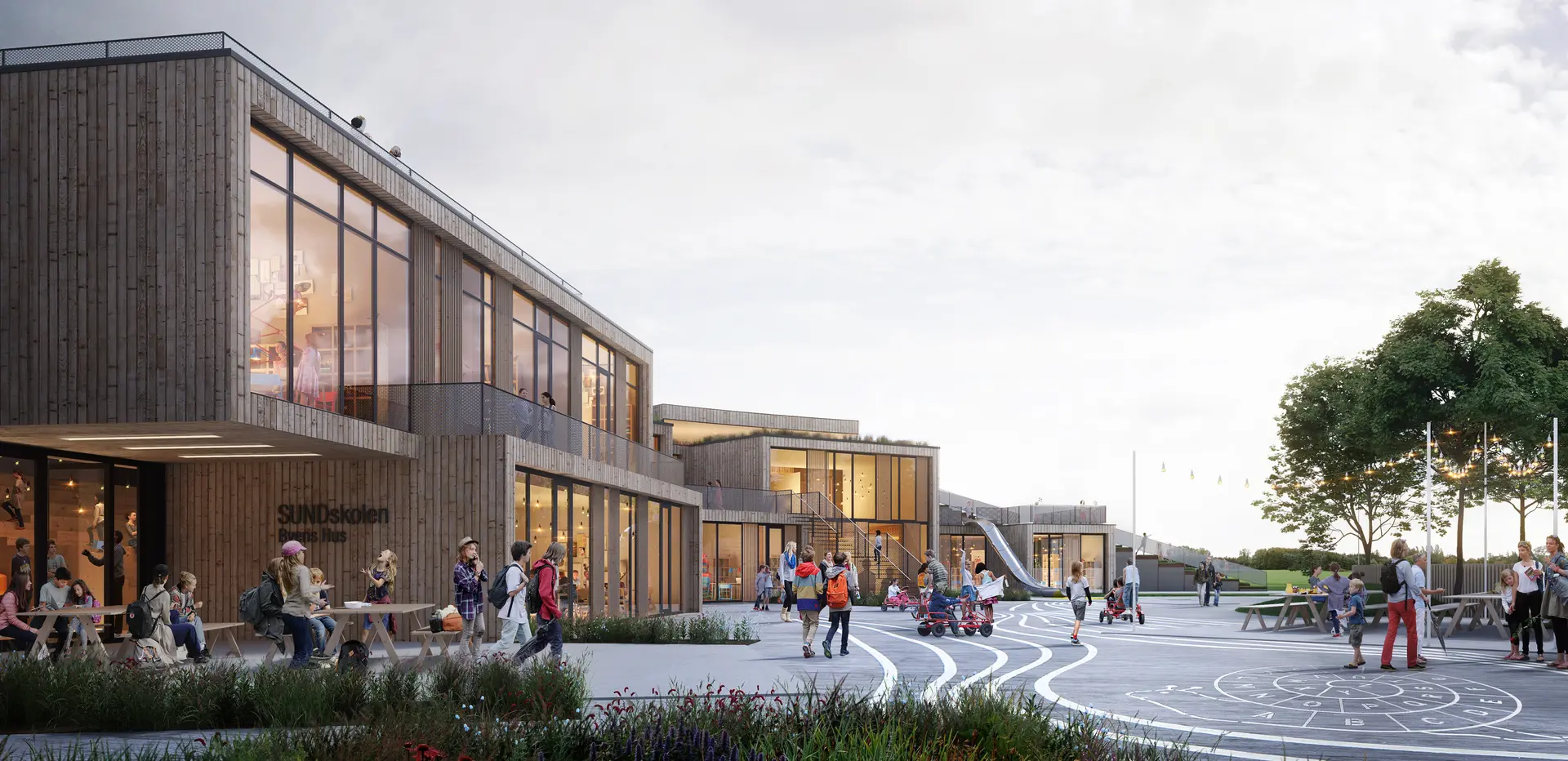
Cincinnati, Ohio, United States
2016 - 2019
University of Cincinnati, Carl H. Lindner College of Business
Our very first project in North America, the Carl H. Lindner College of Business at the University of Cincinnati, was designed as a vision for a new kind of campus architecture. Encouraging interactions, visibility, and a collaborative approach to learning, the building prioritizes undefined social spaces to promote well-being and openness, combating a concerning rise in student loneliness.
Currently welcoming around 50,000 students to campus, in 2016, 29.3% of University of Cincinnati students reported feeling depressed. A concerning trend as, in recent years, over half of surveyed American college students reported feeling overwhelmed, lonely, and exhausted. Approaching this issue with care by rethinking traditional spatial distributions, the Carl H. Lindner College of Business was designed to answer a need for inclusive, social spaces that actively, and mindfully provide invitations for togetherness.
Before beginning to sketch, our team spent weeks on-site observing and measuring how students moved and inhabited the classrooms, corridors, social spaces, and entries of the old building. This process allowed us to upend traditional assumptions that unprogrammed spaces – spaces without a defined function – were wasteful, and in fact suggested the opposite. As a result, the new building is characterized by generous unprogrammed spaces. With 20% more open space and 40% more public space than its predecessor – the business school building now boasts a 60% higher usage rate.
“Universities have a great responsibility in shaping young adults, and what happens outside of the classrooms is equally, if not more important, than what happens inside them. By including a variety of spaces for students and faculty to work and connect on their own terms, we emphasize the importance of the social aspects of learning,” says Michael Sørensen, Design Director and Partner in New York.



Designed for social interaction
Positioned directly next to the central Campus Green at the heart of UC’s West Campus, the building is both a focused learning space and an inviting pedestrian thoroughfare. Its four transparent volumes align with the landscaped green’s existing footpaths, encouraging students to pass directly through the building during their campus commute. In doing so, the building welcomes a much broader community than business students, and acts as a vibrant hub for college life.
“One of the University of Cincinnati’s great strengths is its strong urban identity,” explains Sørensen. “When designing the Lindner building, we thought about the building not as an object on the campus, but as an extension of the campus – it had to both seamlessly fit within and add to its surroundings.”
Offering 70% more student space than its predecessor, the foundational concept of the building’s architecture was to resist the traditional model of compartmentalized classrooms and offices, choosing instead to promote a more generous vision of a learning environment.
A transparent ground floor features the building’s main functions surrounding a full-height, light-filled atrium at the heart of the building. The broad stairs that track through the atrium act as the business school’s lively center, with surrounding seating, lobby furnishings, and café accommodating spontaneous meetings, informal study, and a vibrant view on college life. On the second, third, and fourth floors, faculty offices and classrooms are clustered to the north and south respectively, while a central spine holds conference rooms, meeting rooms, ‘break-out’ spaces, and niches that serve both students and faculty.
With a range of introverted and extroverted spaces the building recognizes diverse needs and enables a sense of ownership, providing opportunities for a variety of preferences. Together, these spaces enable and encourage students to gather and stay. Treating the individual and collective student experience as an essential part of learning, the building design looks to enhance the academic experience and student well-being, as one.

“As an urban university, we have a commitment to not only educate the future workforce but to partner in ways that advance the entire community. This building will provide space to do that.”
Neville Pinto
President, University of Cincinnati




Post occupancy evaluation
As students began to step into the completed Carl H. Linder College of Business in 2019, we embarked on a three-year industrial PhD-study investigating the performance of the open circulation spaces designed for social interaction; were these spaces benefiting the students' experiences and well-being and if so, how could we quantify this?
In addition to qualitative methods measuring student interaction and satisfaction levels in a variety of spaces, the study used location-based sensor technology to measure movement, occupancy, social interactions, group formation, activities, and distances between users. With higher utilization rates and satisfactions rates than enclosed spaces, the results illustrated the significance of open and seemingly undefined spaces in designing inclusive, people-centered educational buildings.
Additionally emphasizing this, through the Covid-19 pandemic, it was unprogrammed spaces that could remain in use and support a sense of campus life while the use of enclosed spaces with defined functions had to be significantly restricted.

“Universities have a great responsibility in shaping young adults, and what happens outside of the classrooms is equally, if not more important, than what happens inside them.”
Michael Sørensen
Global Market Director


Technical performance
The building has received LEED v4 Gold Certification, and prioritizes strategies that minimize environmental impact while simultaneously maximizing human comfort and wellbeing – indoors and out.
Orienting the glass façades and overhead skylights to maximize daylight, internal spaces enjoy natural ambiance and a lower reliance on electric lighting. The building’s planted green roof absorbs rainwater, which evaporates as the temperature rises, cooling the entire building through natural means. Overall, the design reduces the building’s projected annual energy costs by 24% compared to similar campus buildings.


Contact
All contacts
Michael Sørensen
Global Market Director

Daniel Baumann
Design Director, Americas
Next project
Sundby School
Explore project